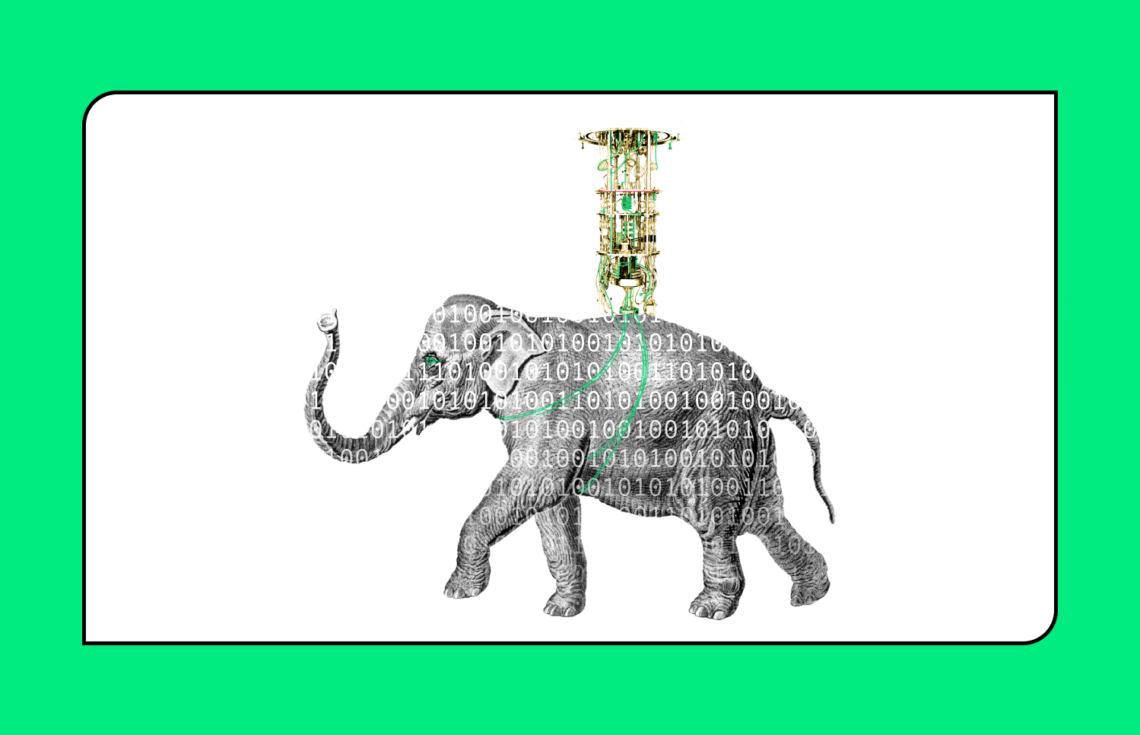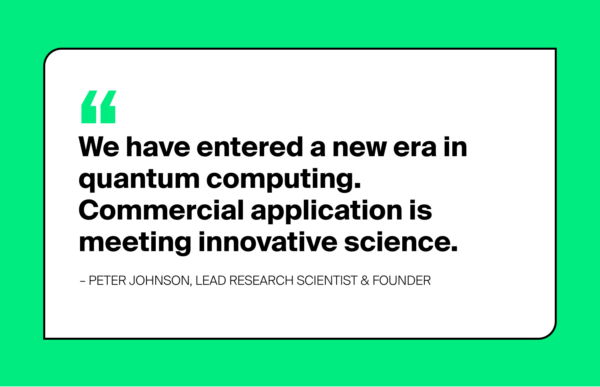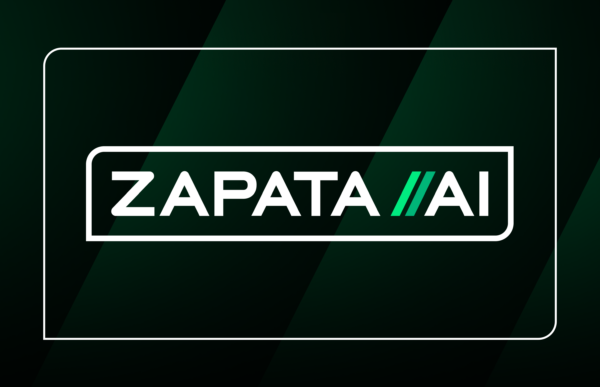The (Classical) Elephant in the (Quantum) Room
[…] quantum computing requires an immense amount of classical work that goes unnoticed even though its presence looms large, like the proverbial ‘elephant in the room’ that nobody acknowledges
Christopher Savoie, CEO & Founder
As we have written elsewhere, quantum computing solutions in practice will always be a hybrid of classical and quantum. This has less to do with the maturity of existing quantum devices than it does with the relative strengths of classical and quantum computing. What this means for bringing quantum computing into the enterprise is simple: getting the maximum impact from quantum computing now and in the future demands getting the classical part of the computational workflows right.
To illustrate this point, consider a standard implementation of variational quantum eigensolvers (VQEs), a class of methods for using near-term quantum computers to solve certain chemical energy optimization problems. As you can see in the workflow below, from model creation and circuit preparation to data cleaning and deployment, the vast majority of the computational work takes place on classical devices. Although the one quantum step – typically at present relying on cloud access to a quantum device – might get most of the attention, harnessing its power depends entirely on classical pre- and post-processing.
This is the classical elephant in the quantum room: quantum computing requires an immense amount of classical work that goes unnoticed even though its presence looms large, like the proverbial “elephant in the room” that nobody acknowledges. Of course, optimizing the classical steps in the process requires quantum expertise and awareness. Without that expertise, any hope of quantum speedup can be lost in the classical steps of a workflow. Even if you have the best quantum algorithm, you won’t realize any benefit unless you account for classical overheads and roadblocks and mitigate these problems.
Becoming Classically Trained
Addressing the classical side of the quantum equation demands a specific toolset. Does this toolset need to facilitate work on quantum circuits? Of course. But in order to build useful solutions around these circuits, you need a lot more than that.
To begin with, the necessary platform architecture requires a model layer above the quantum layer. These models are parameterized objects that can be implemented via quantum or classical means.
Above the model layer, one needs a computational workflow layer. This layer supports the building and testing of models.
Finally, on top of the computational workflow layer, one needs an enterprise workflow layer. This layer handles all the infrastructure, such as data warehousing, data transport and ETL, needed to support the computational workflows. It’s here that the platform must account for and integrate with legacy enterprise systems already in place.
Reducing Complexity
While a platform architecture meant to support both the classical and the quantum portions of this process might seem complex, the ideal platform actually works to reduce complexity. And it does so in several ways.
The use of containerization ensures scalability, portability and efficiency in deployment. This efficiency and scalability is further enhanced by automated execution of processes. Given the intense data preparation and analysis needs of most quantum computing workflows, advanced data management capabilities are key. And, last but not least, building models and workflows becomes a lot easier when users can work with robust component libraries.
Getting to Production
Quantum computing in the enterprise can’t become a reality without addressing the classical elephant in the room. It is the only way to go beyond quantum experiments and POCs and begin focusing on actual quantum-ready applications™. At the end of the day, decreasing the time to production-grade applications is the name of the game.
Waiting until quantum devices mature, however, is not the answer to achieving quantum – or competitive – advantage. Instead, organizations need to get quantum-ready applications™ into production as soon as possible and plug in new, more capable devices as they become available. If organizations don’t do this, they simply won’t be able to catch up to those who are already there.
Focusing on production means, among other things, thinking about enterprise requirements for scale and performance. To meet those requirements, a platform needs to minimize the total production runtime across classical and quantum phases. This entails meeting challenges associated with both data handling and heterogeneous compute environments, especially with regard to data locality and overall I/O efficiency.
The platform also has to integrate with a variety of enterprise systems in order to run workloads on quantum devices, HPC, GPUs, and other hardware platforms. And it has to do all of the above while maintaining security and data privacy in accordance with enterprise standards and regulatory requirements.
Quantum devices remain complex, expensive and primarily accessible via the cloud, making coordinating access to them as part of a larger, automated workflow increasingly complex. We built Orquestra®, quantum’s only enterprise-scale workflow management platform, to make that complexity manageable – today and in the future.
Over time, as quantum devices mature, the classical computing overhead will grow as well. Take for example the grouping of Pauli terms, a key step before sending a circuit to a quantum device. As quantum devices grow from today’s tens of qubits to tomorrow’s hundreds, the classical computing problem to be solved gets anywhere from ten thousand to a billion times harder, depending on how clever your grouping technique is. The platform you choose for the near term needs to anticipate this growth in complexity and be able to automate it. Orquestra does just that.
Embracing the Elephant
The classical elephant in the room isn’t going away. On the contrary, as quantum computers improve, the need for classical compute power to work closely and performantly with quantum will only grow. Bringing quantum computing into the enterprise means embracing the elephant. And maybe even teaching it a few new tricks!




